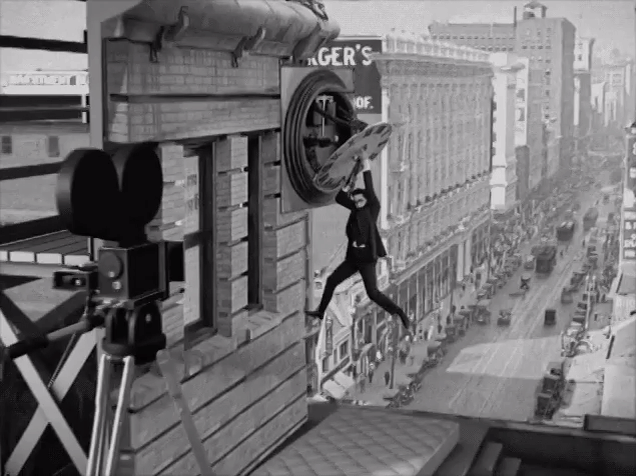Creative Technology Monthly: Disappearing interface
Issue 03: Disappearing interface with Marc Curtis - January 2017
Disappearing interface
by Marc Curtis
Invisible is the new black
Here’s a term you’re going to hear more of in the coming months. It’s not a new term, UX luminaries such as Don Norman have been writing about the challenges of designing natural interfaces for years. So what is it?
Put simply, since the dawn of computing we’ve employed various visual displays to impart and interact with the information and functionality afforded by the device.
In the earliest days of computing dials and lights displayed the results of computations. This became VDUs (I bet that’s a term you’ve not heard in a while), and soon — with the coupling of the GUI (Graphical user interface) and the mouse (invented my Xerox and made popular by Apple) — we all learned how to interact with our machines by pointing and clicking.
Mobile devices have evolved this with the development of gestural interaction (touch, swipe, pinch etc), but the basic idea remains the same. We use a screen to interact with our computers.
Earl grey, hot
During the relatively short evolution of GUI interaction, technologists have tried at various points to catch up with the dream of a voice interface as promised to us by popular sci-fi like Star Trek.
As far back as the mid 90’s software such as Dragon Naturally Speaking enabled users to execute simple commands on their PCs (albeit with varying degrees of success).
In recent times, giants such as Google and Apple have worked hard to perfect voice recognition to the point that we can now reliably talk to our devices with every expectation of being understood. However the interactions are still validated and enable by screen based devices.
Alexa, play music 🔊
Now, this is all set to change. Amazon Echo is one of the first of a new breed of device that does not have any kind of display. All interaction is handled using voice commands. Crucially these commands should use language that sounds as natural as possible, delivered in a range of accents by users of all ages.
In effect we are entering an age of the Disappearing interface.
This raises a number of challenges for designers, UX professionals and developers (imagine trying to deliver a recipe and instructions for a user with no visual reference points) as well as a range of challenges for users, who may have to learn new ways of interacting with these systems
Don Norman would point towards his long held belief that poor user experience is due to poor design. So these challenges really centre on our ability to understand how users need to interact and build invisible interfaces that seamlessly provide that interaction.
🔥 Showcase
 How some cool silent film effects were done, creative technology in a different era
How some cool silent film effects were done, creative technology in a different era

Wind and Words is an interactive Game of Thrones data visualisation. Using data collected from script dialogue and other sources, this experiment analyses and visualises characters’ words and interactions from the first six seasons of HBO’s Game of Thrones.
Here’s an amazing world Goro Fujita created using Quill for the Oculus Rift.

HP’s Sound in Colour is a beautiful microsite for one of their laptops. It records sounds that you create and transforms them into a piece of artwork. Mine is above 🎨
Astronaut.io is really cool. It presents seemingly random Youtube videos, these videos have almost zero previous views. They are unnamed, unedited, and unseen by anyone but YOU.
Mystery Search is a potentially NSFW site for Google searches that gives you the search results for what the person before you searched for.. Sounds confusing, I know. But give it a whirl if you dare..
📖 Reading / Link list
- Designing for Brand Interaction by Rebecca Ussai Henderson relates to last month’s CTM by showing how a branded experiences can be created👌
- Welcome to the internet of superfluous things by, our very own, Marc Curtis talks about some of the useless things that are being created these days. “For the love of all that is holy do we need Edwin the Smart Rubber Duck? I’m calling it: we’ve reached peak internet of things.”
- On a similar note, The CES of Shit is a brilliant, curated Twitter Moment from the @theinternetofshit showcasing all the awful things at CES this year. Do we really need smart underwear? Why do some people even bother?!!
- Awesome-casestudy is a curated list of technical case studies about front-end development.
⚒ Code
- 🎉 Webpack 2 (or more appropriately, v2.2.0) has finally been released, read about it here. There’s even a brand new website for the project too: webpack.js.org
- p5.js is a JavaScript library that starts with the original goal of Processing, to make coding accessible for artists, designers, educators, and beginners, and reinterprets this for today’s web. Follow an interactive introduction at hello.p5js.org
- Rellax is a buttery smooth, super lightweight (1021bytes gzipped), vanilla javascript parallax library that also works on mobile.
- Incheon is a real-time multiplayer game server based on Node.js. I can definitely see this coming in use soon..
- Satyr.io is a useful dummy image generation service. They have all the usual features plus a bunch more, like network delays, logos for various well-known brands, and even flags of the world!
📱 Apps
- Antipersona is an app which lets you experience what it’s like to use Twitter as someone else for a day.
- The 31 tools we use to make our “semi remote” SaaS team work efficiently by Emeric Ernoult lists many useful app that may help you and your team work.
- Kitestring checks up on you when you’re out and alerts your friends if you don’t respond. Best of all, the service is completely free but its SMS-based, so it isn’t strictly an app.. This is somewhat similar to the Boy Bye Bot for when you want to give a fake number ‘for real fuckbois’.
🍗 Interactive Team Activity
You might have noticed that we are not the ‘Tech team’ any longer, this is because there has been a bit of a reshuffle at TMW. We are now the Interactive team. More on this soon. 😄
🗣 Vijay gave a brilliant #brunch&learn talk about Docker. It will improve development and release workflow, and reduces costs that we can pass on to our clients. Look out for his post on Docker soon. 📦
💻 Dee has been creating an Amazon Alexa skill 🗣 prototype for one of our clients; it has already sparked a lot of interest from around the business and we look forward to trying out new skills in this exciting area.
💻 Ciaran & JP have nearly completed a React app for an international bank. Watch this space for a write-up.
📖 Denzel wrote an inspiring article about just getting out there and going for it; read it here. 👍
⚽ Kickoff v8 is very close to being finished. The last bits to be added are for Statix and the Yeoman generator. The docs have been massively improved as well, you can sneak a peak at trykickoff.now.sh.
👋
If you have any comments or feedback, please let us know. If you have any suggestions for next month’s issue. Please send a tweet to @TMWInteractive.